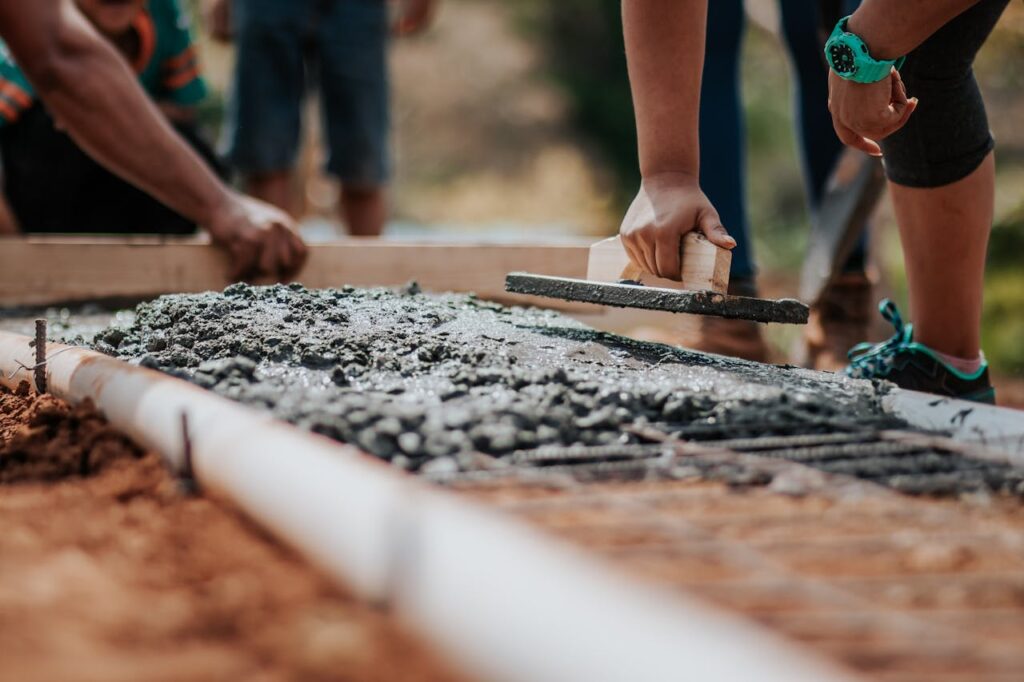Building or repairing a sidewalk is a significant undertaking, whether it’s for your home, business, or as part of a larger community project. Understanding the factors that influence concrete sidewalk cost and navigating the process with your city can be challenging. This comprehensive guide will walk you through everything you need to know about concrete sidewalk cost in the USA, from estimating expenses to working with your local municipality.
Understanding the Factors Affecting Concrete Sidewalk Cost
Several key elements contribute to the overall cost of a city sidewalk project.
Being aware of these factors will help you create a realistic budget and avoid unexpected expenses.
- Size and Area: The most obvious factor is the size of the sidewalk. Larger projects require more materials (concrete, reinforcing steel, etc.) and labor, directly impacting the cost. The area also matters – a long, straight sidewalk is typically less expensive per square foot than one with curves, intricate designs, or multiple sections.
- Concrete Thickness: Sidewalks need to be thick enough to withstand regular foot traffic and weather conditions. Residential sidewalks typically require a minimum thickness, while commercial or high-traffic areas may need thicker concrete, increasing material costs.
- Materials: The price of concrete itself fluctuates based on market conditions. Other material costs include reinforcing steel (rebar or wire mesh), which adds strength and durability, and any aggregates or admixtures used to enhance the concrete mix.
- Labor Costs: Labor is a significant portion of the total cost. This includes the cost of site preparation (excavation, grading), formwork installation, pouring and finishing the concrete, and cleanup. Labor rates vary regionally and based on the complexity of the project.
- Site Preparation: The condition of the existing site can significantly impact costs. If the area needs extensive excavation, removal of old concrete, or significant grading, these preparatory steps will add to the overall expense. Difficult site access can also increase labor costs.
- Formwork: Creating the forms that hold the concrete in place while it cures is a crucial step. Complex designs or curved sidewalks require more intricate formwork, which translates to higher labor and material costs.
- Finishing: The finish applied to the concrete surface affects both aesthetics and functionality. A basic broom finish is the most economical, while more decorative finishes like stamped concrete or exposed aggregate will increase the cost.
- Permits and Inspections: Most municipalities require permits for sidewalk construction or repair. These permits come with fees. Inspections are also necessary to ensure the work meets local building codes, and these may also involve costs.
- Location: Construction costs vary significantly across the United States. Labor rates, material costs, and local regulations all play a role. Urban areas tend to have higher costs than rural areas.
- Accessibility Requirements: If the sidewalk needs to comply with the Americans with Disabilities Act (ADA) guidelines, such as including ramps or detectable warnings, this will add to the project cost.
Estimating Concrete Sidewalk Cost
Getting an accurate estimate is essential. Here are a few ways to approach it:
- Contact Local Contractors: The best way to get a precise estimate is to contact several reputable concrete contractors in your area. Provide them with detailed information about your project, including dimensions, desired finish, and any specific requirements. Get multiple bids to compare prices and services.
- Online Calculators: Several online concrete calculators can provide a rough estimate. However, these calculators often don’t account for all the variables mentioned above, so they should be used as a starting point.
- Consider the Cost per Square Foot: A common way to estimate is by considering the cost per square foot. This can vary widely, but it gives you a general idea. Remember that this is just an average, and your actual cost could be higher or lower.
City Sidewalk Regulations and Permits
Working with your city is a critical part of the process. Here’s what you need to know:
- Permits: Contact your local building department to determine the necessary permits for sidewalk construction or repair. They can provide you with the application process and information on associated fees.
- Building Codes: Sidewalks must adhere to local building codes and regulations. These codes often address issues like concrete thickness, width, slope, and accessibility requirements.
- Inspections: The city will typically conduct inspections at various stages of the project to ensure compliance with building codes. Be prepared for these inspections and schedule them in advance.
- Right-of-Way: If the sidewalk is located within the city’s right-of-way, there may be specific regulations regarding its construction or repair.
- Homeowners’ Associations (HOAs): If you are part of an HOA, they may also have their own rules and regulations regarding sidewalk construction. Check with your HOA before starting any work.
Choosing the Right Concrete Contractor
Selecting a qualified and experienced concrete contractor is crucial for a successful project. Here are some tips:
- Get Referrals: Ask friends, family, or neighbors for recommendations.
- Check Online Reviews: Look for reviews on websites like Google, Yelp, or Angie’s List.
- Verify Credentials: Ensure the contractor is licensed and insured.
- Get Multiple Bids: Compare bids from several contractors.
- Ask About Experience: Inquire about their experience with similar projects.
- Review the Contract: Carefully read the contract before signing, paying attention to details like payment terms, project timeline, and warranty information.
Maintaining Your Concrete Sidewalk
Proper maintenance can extend the life of your concrete sidewalk. Here are some tips:
- Regular Cleaning: Sweep or hose down the sidewalk regularly to remove dirt and debris.
- Sealing: Applying a concrete sealer can protect the surface from stains and weathering.
- Repairing Cracks: Address any cracks promptly to prevent them from spreading.
- Snow and Ice Removal: Use de-icing salts sparingly, as they can damage the concrete.
Understanding Concrete Sidewalk Cost in Your Community
By understanding the factors that influence concrete sidewalk cost, working closely with your city, and choosing a qualified contractor, you can ensure a successful project that enhances your property and community. Remember to get multiple estimates, research local regulations, and prioritize quality workmanship. A well-constructed and maintained sidewalk adds value to your property and contributes to the safety and aesthetics of your neighborhood. Don’t hesitate to reach out to local contractors and your city’s building department for more specific information related to your area and project requirements. This guide serves as a starting point for your research and planning process. Good luck with your concrete sidewalk project! Sources and related content



